The Censydiam approach A vision of mankind and


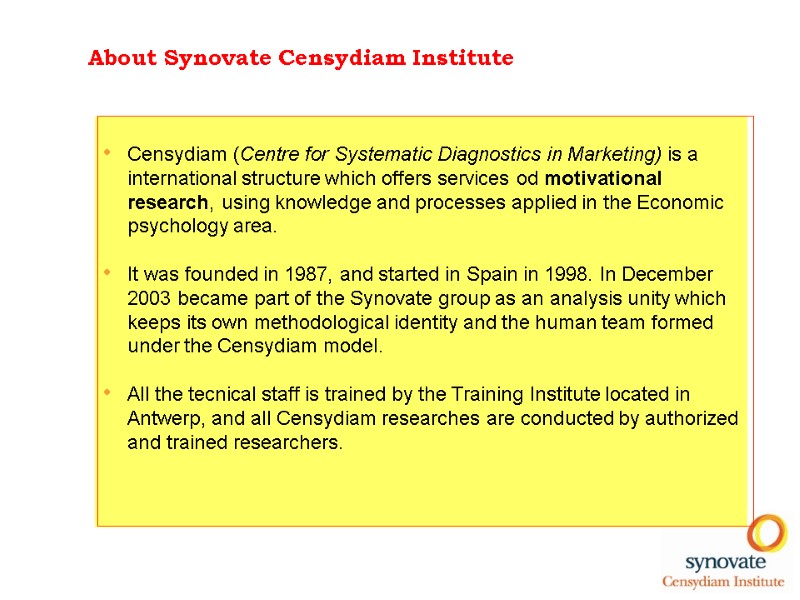


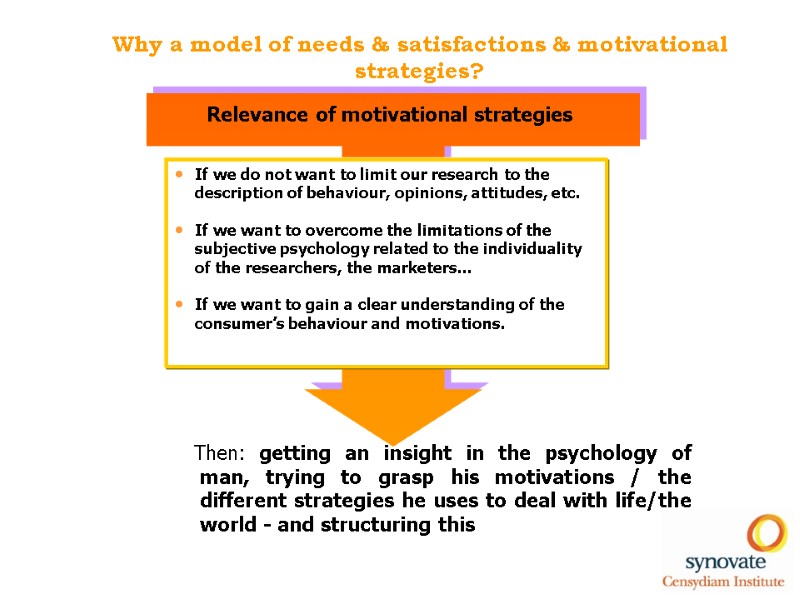

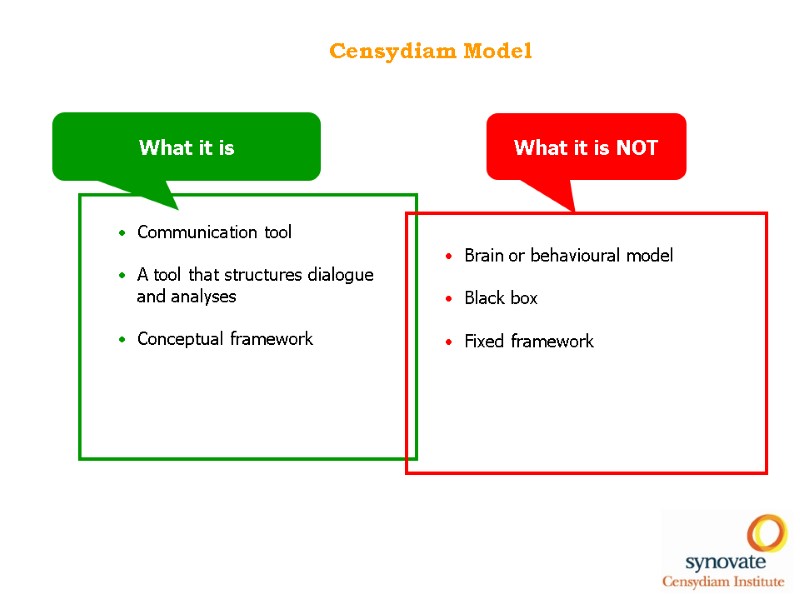
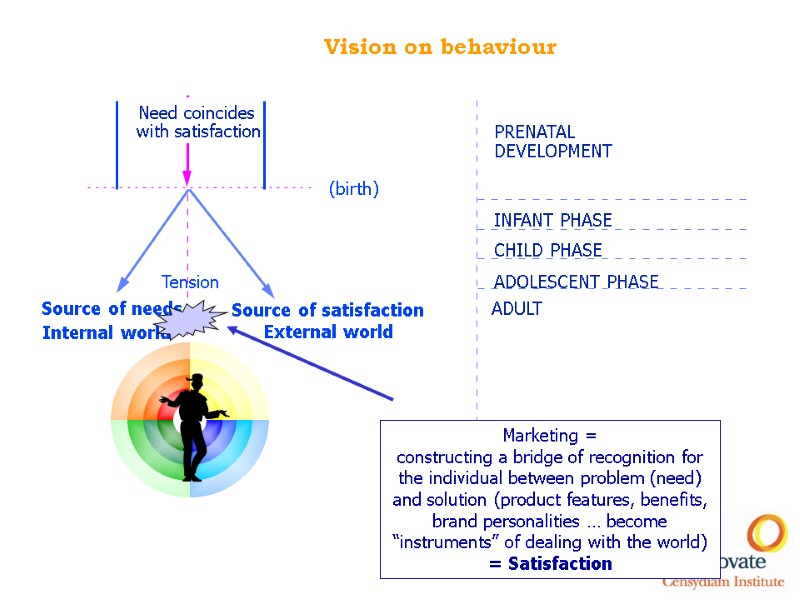

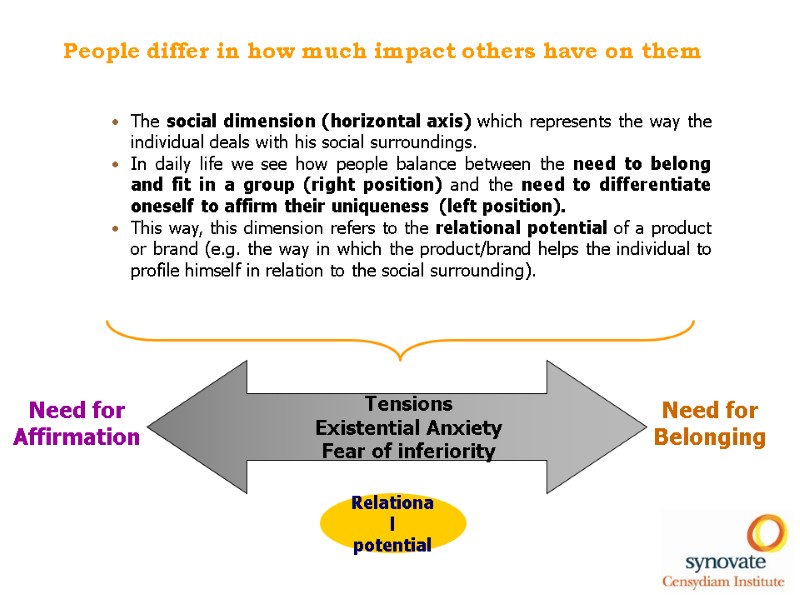

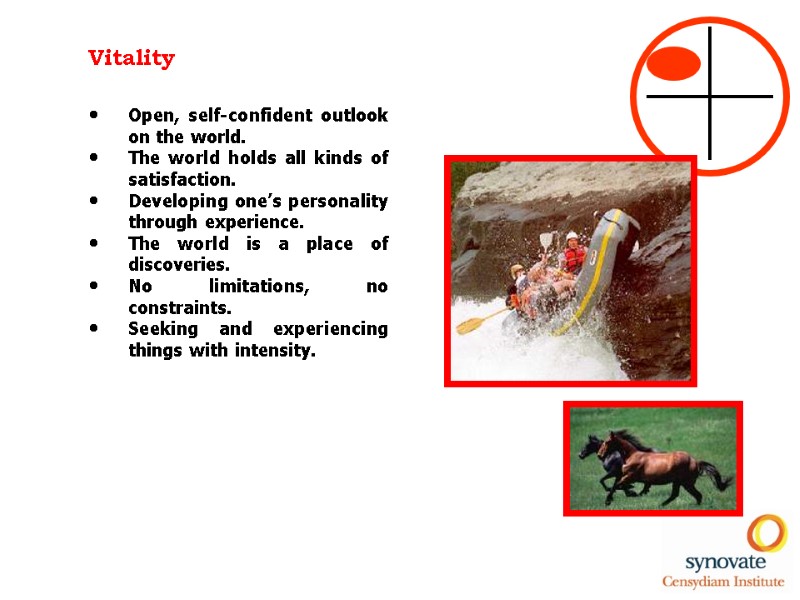

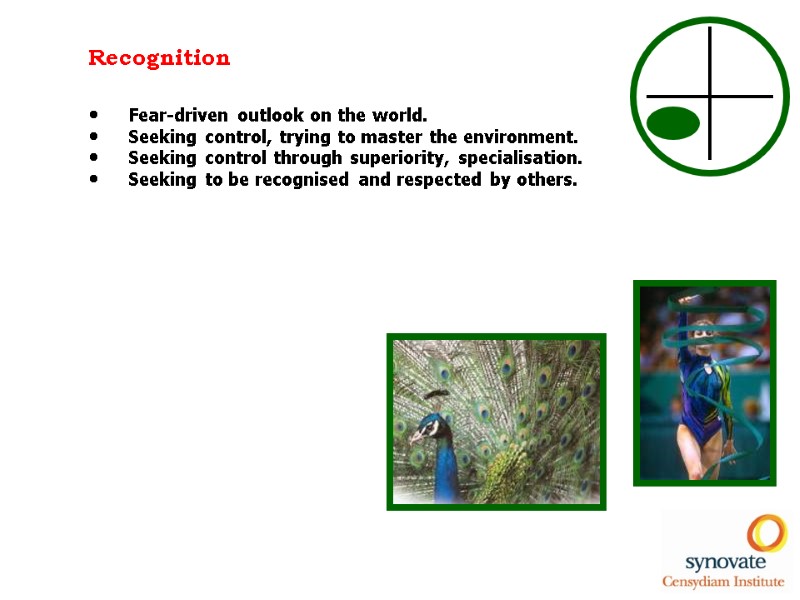













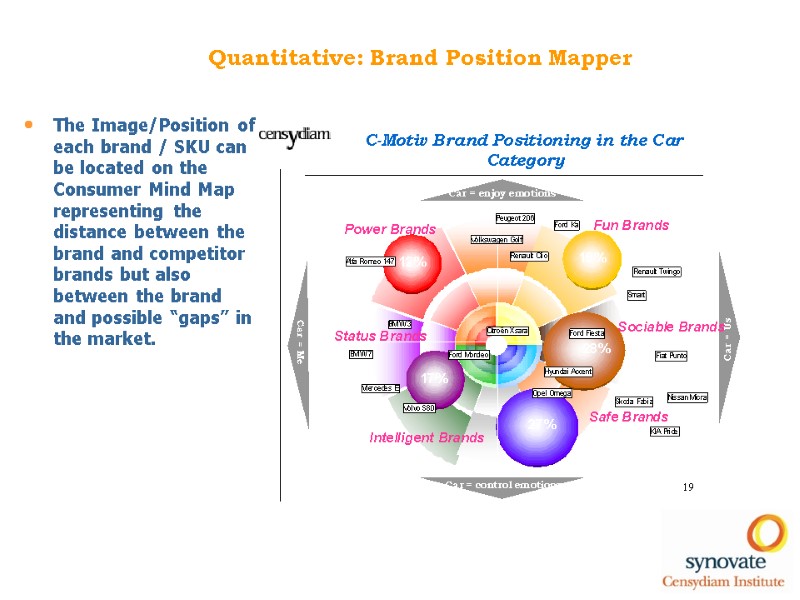







10692-the_censydiam_approach.ppt
- Количество слайдов: 35
 The Censydiam approach A vision of mankind and marketing
The Censydiam approach A vision of mankind and marketing
 About Synovate Censydiam Institute Censydiam (Centre for Systematic Diagnostics in Marketing) is a international structure which offers services od motivational research, using knowledge and processes applied in the Economic psychology area. It was founded in 1987, and started in Spain in 1998. In December 2003 became part of the Synovate group as an analysis unity which keeps its own methodological identity and the human team formed under the Censydiam model. All the tecnical staff is trained by the Training Institute located in Antwerp, and all Censydiam researches are conducted by authorized and trained researchers.
About Synovate Censydiam Institute Censydiam (Centre for Systematic Diagnostics in Marketing) is a international structure which offers services od motivational research, using knowledge and processes applied in the Economic psychology area. It was founded in 1987, and started in Spain in 1998. In December 2003 became part of the Synovate group as an analysis unity which keeps its own methodological identity and the human team formed under the Censydiam model. All the tecnical staff is trained by the Training Institute located in Antwerp, and all Censydiam researches are conducted by authorized and trained researchers.
 SATISFACTION SOLUTION To understand what is needed, we have to depart from the individual and not the solution (product or brand) Implicit Explicit Variability Marketing = Building the bridge between satisfaction and solution
SATISFACTION SOLUTION To understand what is needed, we have to depart from the individual and not the solution (product or brand) Implicit Explicit Variability Marketing = Building the bridge between satisfaction and solution
 Subconscious Drives and Motivations Level 20% Above the Waterline 80 % is Below the Waterline Things I Can Tell You Attitudes and Emotions you Can Observe Diagnostic Market Research Classical Market Research Classical market research gives you sight on the top of the iceberg Visible Objective Tangible Knowledge Hidden Subjective Intangible Not much knowledge
Subconscious Drives and Motivations Level 20% Above the Waterline 80 % is Below the Waterline Things I Can Tell You Attitudes and Emotions you Can Observe Diagnostic Market Research Classical Market Research Classical market research gives you sight on the top of the iceberg Visible Objective Tangible Knowledge Hidden Subjective Intangible Not much knowledge
 Relevance of motivational strategies Then: getting an insight in the psychology of man, trying to grasp his motivations / the different strategies he uses to deal with life/the world - and structuring this If we do not want to limit our research to the description of behaviour, opinions, attitudes, etc. If we want to overcome the limitations of the subjective psychology related to the individuality of the researchers, the marketers... If we want to gain a clear understanding of the consumer’s behaviour and motivations. Why a model of needs & satisfactions & motivational strategies?
Relevance of motivational strategies Then: getting an insight in the psychology of man, trying to grasp his motivations / the different strategies he uses to deal with life/the world - and structuring this If we do not want to limit our research to the description of behaviour, opinions, attitudes, etc. If we want to overcome the limitations of the subjective psychology related to the individuality of the researchers, the marketers... If we want to gain a clear understanding of the consumer’s behaviour and motivations. Why a model of needs & satisfactions & motivational strategies?
 What the heck is Censydiam? Which is the Coca-Cola formula? Where are the weapons of massive destruction? Is there any God? Is there any extraterrestrial life? What happens in the Bermudas triangle? Do we have a soul? What are the black holes?
What the heck is Censydiam? Which is the Coca-Cola formula? Where are the weapons of massive destruction? Is there any God? Is there any extraterrestrial life? What happens in the Bermudas triangle? Do we have a soul? What are the black holes?
 Censydiam Model Communication tool A tool that structures dialogue and analyses Conceptual framework What it is What it is NOT Brain or behavioural model Black box Fixed framework
Censydiam Model Communication tool A tool that structures dialogue and analyses Conceptual framework What it is What it is NOT Brain or behavioural model Black box Fixed framework

 The individual dimension (vertical axis) represents the way the individual deals with the tensions emanating from unfulfilled needs. An individual can either control those tensions (bottom position) or accept and release those tensions (top position). The bottom position is thus driven by doubt whereas the top position reflects an open and confident attitude. In other words, this dimension helps us to understand the satisfaction potential of a product or brand for the individual. Suppress Tension Control Release Tension Extroversion People differ in how strongly they trust being able to satify personal needs and desires Trust Doubt Satisfaction potential Tensions Existential Anxiety Fear of inferiority
The individual dimension (vertical axis) represents the way the individual deals with the tensions emanating from unfulfilled needs. An individual can either control those tensions (bottom position) or accept and release those tensions (top position). The bottom position is thus driven by doubt whereas the top position reflects an open and confident attitude. In other words, this dimension helps us to understand the satisfaction potential of a product or brand for the individual. Suppress Tension Control Release Tension Extroversion People differ in how strongly they trust being able to satify personal needs and desires Trust Doubt Satisfaction potential Tensions Existential Anxiety Fear of inferiority
 The social dimension (horizontal axis) which represents the way the individual deals with his social surroundings. In daily life we see how people balance between the need to belong and fit in a group (right position) and the need to differentiate oneself to affirm their uniqueness (left position). This way, this dimension refers to the relational potential of a product or brand (e.g. the way in which the product/brand helps the individual to profile himself in relation to the social surrounding). Need for Belonging Need for Affirmation People differ in how much impact others have on them Relational potential Tensions Existential Anxiety Fear of inferiority
The social dimension (horizontal axis) which represents the way the individual deals with his social surroundings. In daily life we see how people balance between the need to belong and fit in a group (right position) and the need to differentiate oneself to affirm their uniqueness (left position). This way, this dimension refers to the relational potential of a product or brand (e.g. the way in which the product/brand helps the individual to profile himself in relation to the social surrounding). Need for Belonging Need for Affirmation People differ in how much impact others have on them Relational potential Tensions Existential Anxiety Fear of inferiority
 The Censydiam model: Based on these dimensions, four fundamental strategies can identified for an individual to satisfy his/her needs Recognition Withdrawing to Inner World Going to Outer World Trust Release of tension Belonging WE Affirmation I Integration Suppression of tension Doubt Going to the Outer World Individual psychological needs Each strategy refers to a field of significance in which products/brands can take up the role of solutions for the needs at play Basic Satisfaction Strategies
The Censydiam model: Based on these dimensions, four fundamental strategies can identified for an individual to satisfy his/her needs Recognition Withdrawing to Inner World Going to Outer World Trust Release of tension Belonging WE Affirmation I Integration Suppression of tension Doubt Going to the Outer World Individual psychological needs Each strategy refers to a field of significance in which products/brands can take up the role of solutions for the needs at play Basic Satisfaction Strategies
 Open, self-confident outlook on the world. The world holds all kinds of satisfaction. Developing one’s personality through experience. The world is a place of discoveries. No limitations, no constraints. Seeking and experiencing things with intensity. Vitality
Open, self-confident outlook on the world. The world holds all kinds of satisfaction. Developing one’s personality through experience. The world is a place of discoveries. No limitations, no constraints. Seeking and experiencing things with intensity. Vitality
 Power Need to achieve success and social status We want: To be respected To be tributed To be recognized by the decisions we make Enjoy success We try to imitate leadership and develop self-esteem through imitation.
Power Need to achieve success and social status We want: To be respected To be tributed To be recognized by the decisions we make Enjoy success We try to imitate leadership and develop self-esteem through imitation.
 Recognition Fear-driven outlook on the world. Seeking control, trying to master the environment. Seeking control through superiority, specialisation. Seeking to be recognised and respected by others.
Recognition Fear-driven outlook on the world. Seeking control, trying to master the environment. Seeking control through superiority, specialisation. Seeking to be recognised and respected by others.
 Control Controlled behaviour can represent a way to avoid confrontation with our own emotions and passions Sometimes this behavious is very functional and lacks feelings Control has to do with Logical What we believe is certain Conservative
Control Controlled behaviour can represent a way to avoid confrontation with our own emotions and passions Sometimes this behavious is very functional and lacks feelings Control has to do with Logical What we believe is certain Conservative
 Security Fear-driven outlook on the world. Source of threat. Seeking security (= control). By withdrawing to ‘small’ safe world. In fantasy, imagination (escape). In small, stable circle of people. Importance of safety and stability. World of comfort, loyalty.
Security Fear-driven outlook on the world. Source of threat. Seeking security (= control). By withdrawing to ‘small’ safe world. In fantasy, imagination (escape). In small, stable circle of people. Importance of safety and stability. World of comfort, loyalty.
 Belonging We need to feel Part of a group Accepted and supported by our beloved beings Moreover there is a need for Take care of others Accomplish norms and rules It has to do with Confidence Conviviality Warmth
Belonging We need to feel Part of a group Accepted and supported by our beloved beings Moreover there is a need for Take care of others Accomplish norms and rules It has to do with Confidence Conviviality Warmth
 Conviviality Open to the world. Looking at the environment as a source of energy. Others and surrounding are means to satisfy needs. Importance of feeling accepted and appreciated. Not having to play a role. Feelings of harmony. World of feelings and intuition.
Conviviality Open to the world. Looking at the environment as a source of energy. Others and surrounding are means to satisfy needs. Importance of feeling accepted and appreciated. Not having to play a role. Feelings of harmony. World of feelings and intuition.
 Enjoyment We try to increase at maximum our satisfaction in terms of physical and emotional needs Our satisfaction is spontaneous, immediate and impulsive It has to do with Lacking inhibitions No self-control No social limitations
Enjoyment We try to increase at maximum our satisfaction in terms of physical and emotional needs Our satisfaction is spontaneous, immediate and impulsive It has to do with Lacking inhibitions No self-control No social limitations
 8 Basic Consumer Strategies Release Control Other Self Enjoyment Control Belonging Power Security Conviviality Recognition Vitality
8 Basic Consumer Strategies Release Control Other Self Enjoyment Control Belonging Power Security Conviviality Recognition Vitality
 Brands That Sum Up These Positions Enjoyment Control Belonging Power Security Conviviality Recognition Vitality Nike BMW Mercedes Prudential IKEA Disneyland McDonals Guinness Virgin Cartier BBC Snapple Budweiser
Brands That Sum Up These Positions Enjoyment Control Belonging Power Security Conviviality Recognition Vitality Nike BMW Mercedes Prudential IKEA Disneyland McDonals Guinness Virgin Cartier BBC Snapple Budweiser
 The methodologies we use are attempts to get below the waterline – a challenging endeavor
The methodologies we use are attempts to get below the waterline – a challenging endeavor
 This need to go deep requires lengthy group sessions and the use of psycho-diagnostic tools Each focus group will be four hours in length, conducted in an informal setting and therefore limited to maximum 6 respondents. Individual interviews will last 2 hours. The length of the session is effective because it allows time to: Explore the rational, factual elements that people claim are driving their decisions Breakthrough people’s rational(izing) façades through a series of exercises Acquire individual psychological data Understand the real essence of people’s experience with this product category People do not say what they do, and they do not do what they say… This is not deception on the part of interviewees, but they often are not conscious of what really motivates them It is critical to understand true, as opposed to rationalizing, motivations when you are basing strategic decisions on these answers Diagnostic research formulates a constructive answer to this by using projective and expressive questioning techniques derived from psychology Qualitative Approach - Methodology
This need to go deep requires lengthy group sessions and the use of psycho-diagnostic tools Each focus group will be four hours in length, conducted in an informal setting and therefore limited to maximum 6 respondents. Individual interviews will last 2 hours. The length of the session is effective because it allows time to: Explore the rational, factual elements that people claim are driving their decisions Breakthrough people’s rational(izing) façades through a series of exercises Acquire individual psychological data Understand the real essence of people’s experience with this product category People do not say what they do, and they do not do what they say… This is not deception on the part of interviewees, but they often are not conscious of what really motivates them It is critical to understand true, as opposed to rationalizing, motivations when you are basing strategic decisions on these answers Diagnostic research formulates a constructive answer to this by using projective and expressive questioning techniques derived from psychology Qualitative Approach - Methodology
 Bean bags Take your shoes off Long sessions Photo sorting & indirect questioning De-norming exercises Censydiam Interviewing Style
Bean bags Take your shoes off Long sessions Photo sorting & indirect questioning De-norming exercises Censydiam Interviewing Style

 Cognitive level Things we know Rationalizations + justifications Affective level Attitudes Open lying emotions Deeper lying emotions Connative level Subconscious Deeper drives Diagnostic qualitative research wants to unlock the fundamentals of behaviour Classic market research Diagnostic market research Man is defensive, and does not wish to "give himself away". Man is verbally limited, and has difficulty in explaining the coherence. Man is unconscious or only partly conscious of a number of influences / reasons (he does not wish to "formally recognise" them for himself). Therefore, direct and to-the-point questioning is not the solution
Cognitive level Things we know Rationalizations + justifications Affective level Attitudes Open lying emotions Deeper lying emotions Connative level Subconscious Deeper drives Diagnostic qualitative research wants to unlock the fundamentals of behaviour Classic market research Diagnostic market research Man is defensive, and does not wish to "give himself away". Man is verbally limited, and has difficulty in explaining the coherence. Man is unconscious or only partly conscious of a number of influences / reasons (he does not wish to "formally recognise" them for himself). Therefore, direct and to-the-point questioning is not the solution
 ILLOGIC® : a common methodology accross cultures TREATMENT OF INFORMATION: ILLOGIC® CENSYDIAM has its own software for the treatment and analysis of the qualitative information according to the theoretical model. During all the group sessions an external observer will take notes directly onto a computer from a specially equipped observation room, using this software. When the field work is finished, the analyst will use this information as well as all the technical features of this system, employing visual systems of direct analysis on the texts that appear on the screen. This system guarantees a unique work method for all the researchers at SYNOVATE CENSYDIAM and allows for objectivity in the analysis.
ILLOGIC® : a common methodology accross cultures TREATMENT OF INFORMATION: ILLOGIC® CENSYDIAM has its own software for the treatment and analysis of the qualitative information according to the theoretical model. During all the group sessions an external observer will take notes directly onto a computer from a specially equipped observation room, using this software. When the field work is finished, the analyst will use this information as well as all the technical features of this system, employing visual systems of direct analysis on the texts that appear on the screen. This system guarantees a unique work method for all the researchers at SYNOVATE CENSYDIAM and allows for objectivity in the analysis.
 The Image/Position of each brand / SKU can be located on the Consumer Mind Map representing the distance between the brand and competitor brands but also between the brand and possible “gaps” in the market. Quantitative: Brand Position Mapper
The Image/Position of each brand / SKU can be located on the Consumer Mind Map representing the distance between the brand and competitor brands but also between the brand and possible “gaps” in the market. Quantitative: Brand Position Mapper
 Building the Landscape Core Measurement Elements Inventory Occasion Relevance Occurrence, Appeal, Frequency, Consumption (volumetric & channel data) Occasion Definition Core moments: Last Occurrence, Typical Moments, Next Occurrence (ideal proxy) Occasion Identity Time (when) Place (where) Social (with whom) Occasion Satisfaction (Individual/Intrinsic component) Occasion Personality (Image/Extrinsic component) Brand Relevance Direct Brand Attribution (Brand/Occasion Fit) Brand Personality and Satisfaction
Building the Landscape Core Measurement Elements Inventory Occasion Relevance Occurrence, Appeal, Frequency, Consumption (volumetric & channel data) Occasion Definition Core moments: Last Occurrence, Typical Moments, Next Occurrence (ideal proxy) Occasion Identity Time (when) Place (where) Social (with whom) Occasion Satisfaction (Individual/Intrinsic component) Occasion Personality (Image/Extrinsic component) Brand Relevance Direct Brand Attribution (Brand/Occasion Fit) Brand Personality and Satisfaction
 Building the Landscape Occasion modeling & mapping In a first instance occasions are landscaped according to their experienced satisfactions and image components Status Capability Bonding Joy Control Fictious example
Building the Landscape Occasion modeling & mapping In a first instance occasions are landscaped according to their experienced satisfactions and image components Status Capability Bonding Joy Control Fictious example
 Building the Landscape Occasion modeling & mapping In a second phase the occasions are sized based on the frequency of their occurrence and thus assessed on their relative importance. In the same frame the volumetric weight can be added. Fictious example Family Gathering 17% After Party 5% Fancy moments 3% Savoir Vivre 8% 6% 15% Kids Time 5% TV Dinners Basic Nutrition Impress me 6% Party time 13% Energize me 7% 5% Weight Control 4% Out with friends 4% Snacking
Building the Landscape Occasion modeling & mapping In a second phase the occasions are sized based on the frequency of their occurrence and thus assessed on their relative importance. In the same frame the volumetric weight can be added. Fictious example Family Gathering 17% After Party 5% Fancy moments 3% Savoir Vivre 8% 6% 15% Kids Time 5% TV Dinners Basic Nutrition Impress me 6% Party time 13% Energize me 7% 5% Weight Control 4% Out with friends 4% Snacking
 Building the Landscape Occasion Definition Occasions are further defined in terms of satisfaction, demographics and occurrence. Demographics Emotional Benefits Satisfaction mechanism Name of Occasion: Family Gathering WHO WHY Occurrence WHEN Consumers 30-49 least relevant to consumers 15-25 Less well educated consumers (high school or less) 23.2% Child(ren) under 18 54.8% With family 35.5% Spouse/partner 10.0% Mother/father 29.0% Between 5-8 pm 5.3% Brother/sister 99.8% In own home 13.0% Eating lunch 23.4% Eating a snack 33.6% Eating dinner 18.2% Between 8-11 am Fictious example
Building the Landscape Occasion Definition Occasions are further defined in terms of satisfaction, demographics and occurrence. Demographics Emotional Benefits Satisfaction mechanism Name of Occasion: Family Gathering WHO WHY Occurrence WHEN Consumers 30-49 least relevant to consumers 15-25 Less well educated consumers (high school or less) 23.2% Child(ren) under 18 54.8% With family 35.5% Spouse/partner 10.0% Mother/father 29.0% Between 5-8 pm 5.3% Brother/sister 99.8% In own home 13.0% Eating lunch 23.4% Eating a snack 33.6% Eating dinner 18.2% Between 8-11 am Fictious example
 Building the Landscape Brand/Occasion mapping & significance Status Capability Bonding Joy Control Fictious example
Building the Landscape Brand/Occasion mapping & significance Status Capability Bonding Joy Control Fictious example
 Algunos de nuestros clientes...
Algunos de nuestros clientes...
 Our curiosity is all yours. Thank you.
Our curiosity is all yours. Thank you.

